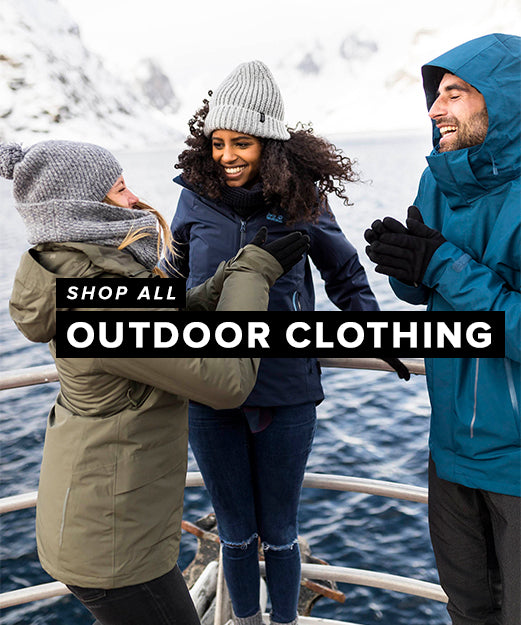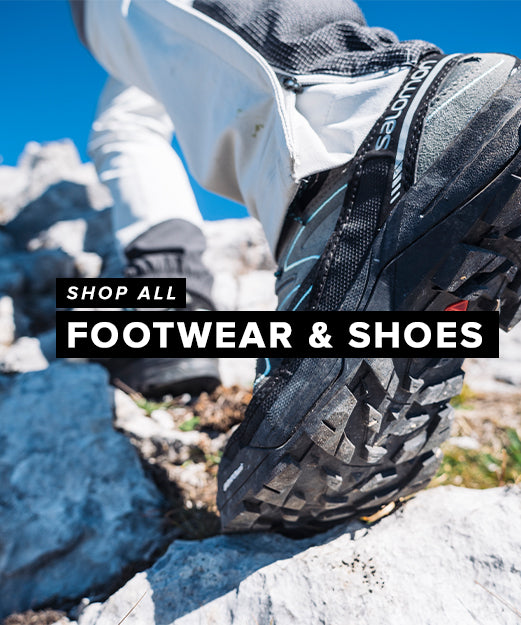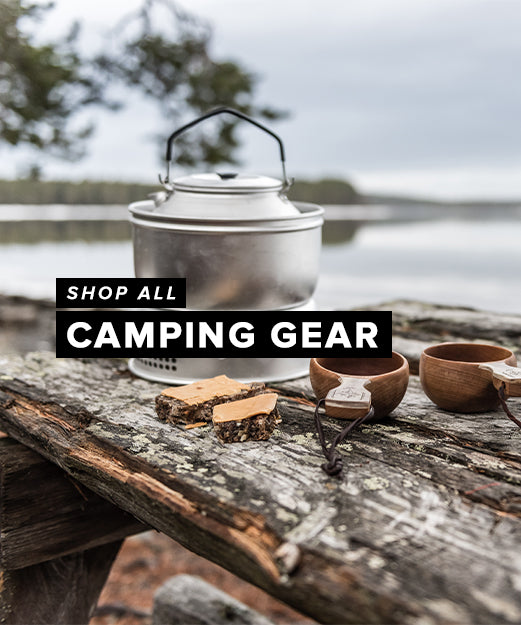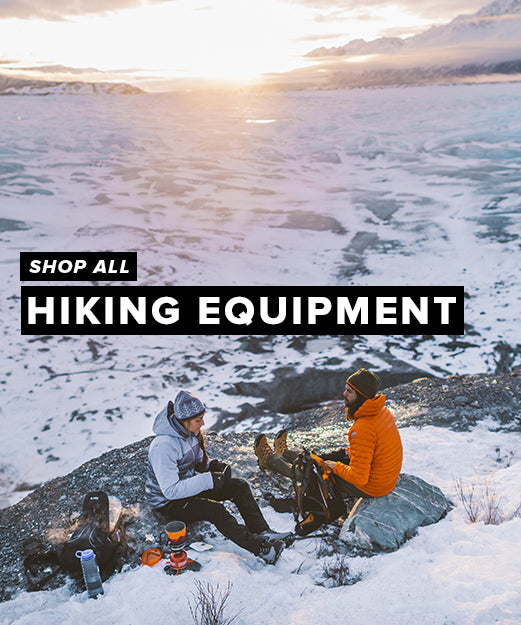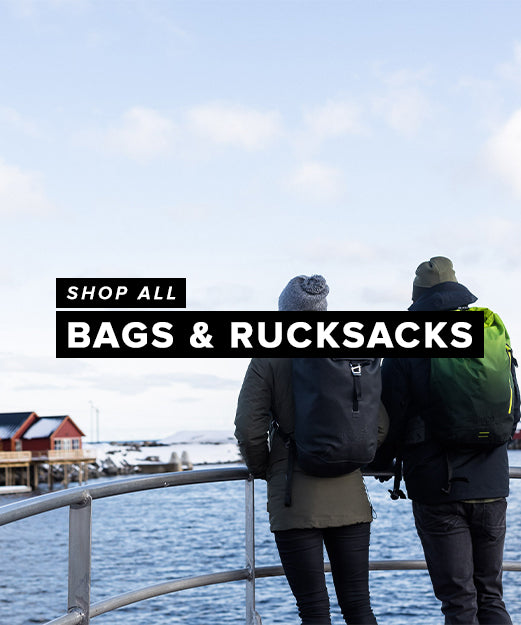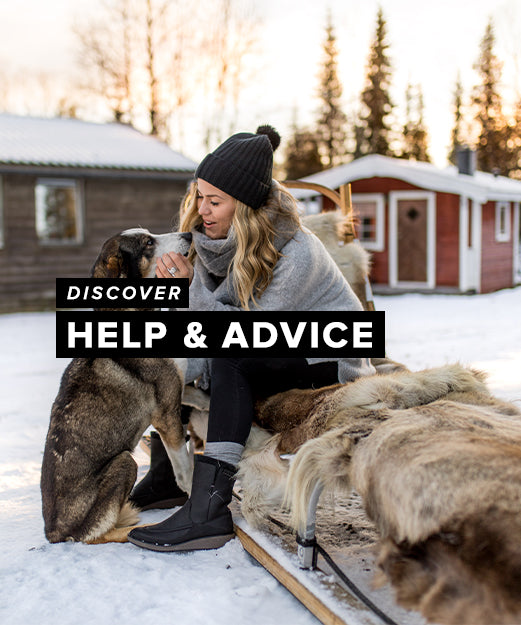
Gathering your kit can be super easy to do or it could be the thing that stops you from going backpacking. If you’re looking to go super lightweight then it’s simple, you have the clothes on your back and your toothbrush in your pocket and that’s pretty much it! But let’s be realistic, doing that might have been the thing to do back in the day, but now that's pretty unheard of.
You need to first find the careful balance of what you need to take with you and what you want to take with you. When I’m going off on an adventure the first thing I do when gathering up my kit is written a list of what I want to take with me, I then break that list down into three sections, essentials, utilities and luxuries. I take into consideration where I’m going, how long for, the time of year I'll be travelling and also what stops are along the way based on a rough plan of my trip. Using this information divide my want list between the three categories. So let’s say I'm backpack for a week in the UK spring/summer time and I’ll be camping… let’s take a look at my list.
So first up my essentials list, here we have a tent, sleeping bag, cooking equipment, small selection of dry food enough for a couple of days, a litre of water, water filter, matches, a small selection of clothing which consists of a couple of tees, hiking trousers, underwear, 100 weight mid-layer and light waterproof jacket, a selection of dry bags, Of course, a first aid kit is a must, basic wash kit, a mobile phone, power bank, a head torch and of course maps of the areas I'm exploring.

In my utility list I would have, a roll mat, extra clothing, lighter footwear for when I'm at a campsite or wild camping, emergency shelter, compass, a GPS navigation system, extra toiletries, water carrier, a small selection of “wet foods” and maybe a bigger tent for extra comfort. My Luxuries would consist of a tablet or laptop, a selection of books, a DSLR camera, an air bed instead of a roll mat and maybe a selection of tools like an axe or a saw if I really wanted to go off the beaten track.
The only time that the list will change depends on the season and how long I'm travelling for other than that the core of the list will be the same, you also might be thinking what about this, or that? Again that list is what I would take, everyone has a different idea on what’s essential and what isn’t, but going from my list you can start thinking about what you need to look at when you’re gathering your kit. And yes I really do only carry a litre of water with me and I just top it up when possible with the water filter, doing that makes your pack lighter and it also gives you more room.
So you have worked out your list and you have a rough idea of what you want to take with you on your adventure, you now need to master your backpack, you need to work out what goes where to give you maximum efficiency this will also help you determine what size pack you need. Now when it comes to packing sizes again to each their own but if you need a pack that’s bigger than 65 litres you are taking way to much stuff. When it comes to packing you must remember that around your hips is a load-bearing area and that your backpack hip band goes just above your hips and not on your hips, this helps lift the weight off your back but it still offers amazing support.

So with that in mind make sure your heaviest items are evenly spread at the lower part of your pack and work your way up so the lightest items are right at the top, on a super serious note you do not want your pack to be top-heavy. When it comes to organizing your kit dry bags are a lifesaver, just because you tent comes in a bag, it doesn’t mean it should stay in it, break it up have the poles out loose in your pack and have the inner and outer shell in a dry sack doing this will save you a ton of space and if you buy different colour drybags you know what item is in what bag. Try not to strap too much or anything at all to the outside of your pack other than maybe a bottle of water. Having things dangling on the outside will only lead to disaster.
The last point I will make about organizing your backpack is that your chest strap should not be done up. I’ve seen way too many people with heavy packs on, with their chest straps are done up all the way and they always look in pain. If you have packed properly you won’t need to have you chest strap attached or if you do it should be on the widest setting without it pulling across your chest.
So we know what to pack, we know how to pack it and we know the best way to wear your backpack now let’s break down some of the key items in the essentials list that no matter how long your hiking for you will need to take with you. So first off let’s talk walking boots, My rule of thumb when it comes to boots is that comfort is always key, the sole needs to be stiff but not so stiff that you can’t bend it, look at the tread, does it have a good variety of depth and grip angles?

How high up is the ankle support? Is it too high, or too low? Now what I say next some of you might think I’m being a tad picky but hey! Laces… your boot laces need to be flat, rounded laces suck as they come to lose way too often... So yeah if you have found the perfect boots and they have rounded laces just swap them out… you’ll thank me for it later! Waterproofing is also the big thing when it comes to boots! Shall I go for Gortex? eVent? Own brand waterproofing… well if you want something that is waterproof and also guaranteed then Gore-Tex is for you, if you want something that is more breathable but still keeps your feet dry then I’ll say go for eVent and most own brand waterproofing is fine it just means you might have to top up the outer coating a bit more, but like I said at the start comfort is key.
The waterproof advice also works the same when buying a jacket or trousers, gore-tex is good, eVent is good but I would recommend looking at Polartec NeoShell it’s one of the most breathable and waterproof materials on the market. Outside of the waterproof gear, I would always be thinking of the classic three in one system, so baselayer or T-shirt, then a fleece mid-layer then an outer waterproof layer, this system will keep you nice and warm and you can adjust super easy whether you get too hot or cold.
So let’s talk cooking equipment, Trangers are a good shout, they are lightweight, come with bowls and pans the only downside is they do take up a lot of room. The main thing you should consider when looking at stoves is how wide the burner head is and if that is sufficient enough for you. Fuel, of course, is a big issue, personally I would recommend going for a multi-fuel setup one stove that can take all types of fuel. Or for the more eco-friendly backpacker out there wood stoves are becoming more and more popular. Especially with the likes of Biofuel, were using wood you can cook your meals but also at the same time charge your electronic devices and doing this without using gas.

The last super important thing really would be your tent if you’re backpacking in warm or freezing climates get a tent with a low hydrostatic head, this will keep you tent nicely a breathable, and you guessed it if your looking to travel during the rainy season then a nice high hydrostatic head will keep you dry, but get use to having condensation build up in the mornings.
And that’s pretty much it, so we have covered what you should pack, how to organise it, how the pack should fit on your back and also what to look for when buying the key essential kit.
 NEW!! Free UK Delivery
NEW!! Free UK Delivery Hassle-Free Returns
Hassle-Free Returns Clearpay
Clearpay


